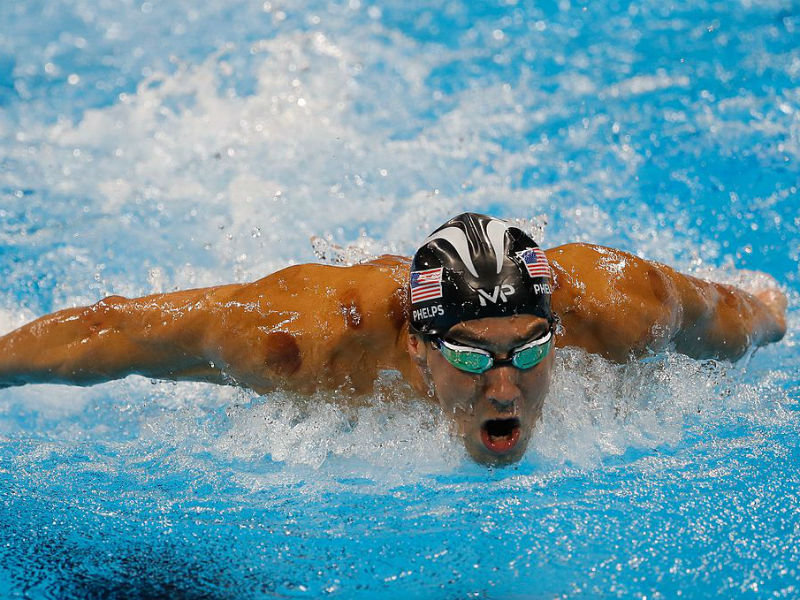With roots in Traditional Chinese Medicine (TCM), a form of therapy known as "cupping" has emerged in the Olympic headlines. When dark circles appeared on the Olympian Michael Phelps after a cupping treatment, everyone started asking: What are those things? Does it work? What does the evidence say? We’d like to answer a few of those questions.
Types of cupping
Cupping therapy really refers to an umbrella of techniques. The common theme amongst all of them is that a vacuum, or negative pressure, is created inside a cup pressed on the skin. This pulls skin, fascia and muscles into the cup and creates tension in the tissues. There are several variables between the different types of cupping including the type, material and size of cup; method used to create a vacuum; procedure used once the cup(s) are in place; and other therapies used in conjunction with cupping.
The form of cupping we use in office most frequently is known as "moving cupping."
This provides great results, but less commonly creates the bruising or skin changes seen on Michael Phelps.
Does it work?
The short answer is yes. The long answer is maybe but we’re not sure why.
Cupping may be used for any number of conditions, but in Korea, where it is commonly used, it is primarily used to treat musculoskeletal pain. Several recent studies on cupping have suggested that cupping is effective in treating pain. Further research is needed, but anecdotally, Miller Sports and Wellness has had good results with patients in our office.
How does it work?
A comprehensive review article on cupping was recently published in 2016 by Rozenfeld and Kalichman. This is a great starting point for reviewing the literature, and some of their findings are summarized below.
Several theories on why cupping works have been proposed which appear feasible; however, none have actually been proven. Here are just a few of the proposed mechanisms:
- Neurologic Mechanism: Cupping may stimulate the nerve pathways that inhibit pain signals sent through the spinal cord to the brain.
- Physiologic Mechanism: Cupping increases circulation, which may also cause minor capillary bleeding (this explains the bruising and skin changes as well).
- Immunologic Mechanism: Cupping most likely improves lymph drainage as well as locally increasing some chemical messengers of the immune system.
- Emotional Response: Cupping can induce a deep state of relaxation which increases the motivational-affective pain processing network.
While these mechanisms are interesting and similar to those of acupuncture, there is clearly a need for more research to determine why cupping is effective for treating pain.
Risks
There are some times when cupping therapy is not appropriate and experience/expertise of your provider is important. Complications are rare and in most cases result from poor technique.
The most common reactions are temporary skin color changes or local bruising. In a review article citing 550 studies involving different forms of cupping therapy in China, no serious adverse effects were found.
Reviewing medical research
It is always best to do your own review of a technique, so here are a few things to consider when reviewing medical literature on this topic:
- Variety of cupping techniques: The wide variety of techniques makes comparing research like comparing apples and oranges!
- No standardization of cupping protocols: Some providers leave cups in place three minutes; others up to 10 minutes. Some providers use one cup at a time, while others choose to use five to seven. Even within compared techniques, each study utilizes different methods.
- Variety of conditions: Cupping therapy has been reported on for numerous conditions ranging from musculoskeletal pain to hypertension and most conditions in between. Determining effectiveness can only be done when you discuss its efficacy for a particular condition.
Our recommendations
Miller Sports and Wellness highly recommends cupping therapy, as a part of a treatment plan, with a qualified provider.
We have personally seen numerous cases with very positive results from moving cupping. Given the fact that it is inexpensive and carries very few, even minor risks, we feel it provides a valuable tool as a supplement to an active treatment plan.
Miller Sports and Wellness (MSWC) is a team of movement specialists trained to help patients understand their unique movement and lifestyle habits to optimize their body's performance. MSWC is headed by Dr. Therese Miller, a Chiropractor with training in Active Release Technique (ART) and is a Certified Corrective Exercise Specialist and overall fitness fanatic. Dr Miller loves to help patients create balance in their bodies by uncovering movement inefficiencies to get to the root cause of their pain and movement dysfunction. MSWC is proud to have Ryan Lowery, athletic trainer, who functions as the team's sports medicine specialist, with key areas of focus in injury diagnosis, knee dysfunction and rehabilitation, and concussion care.







